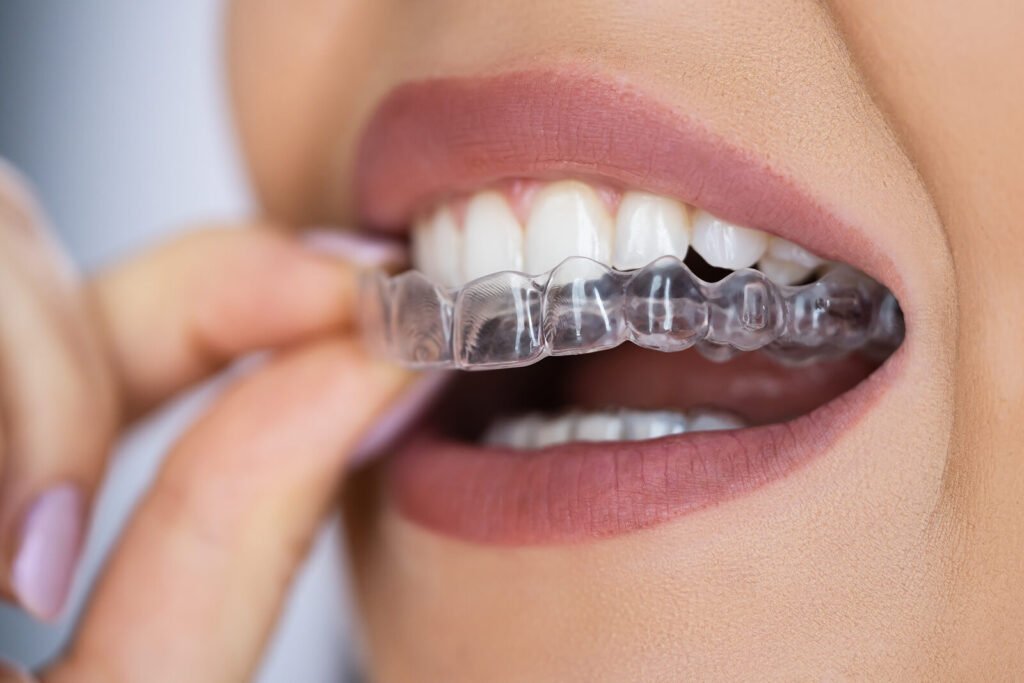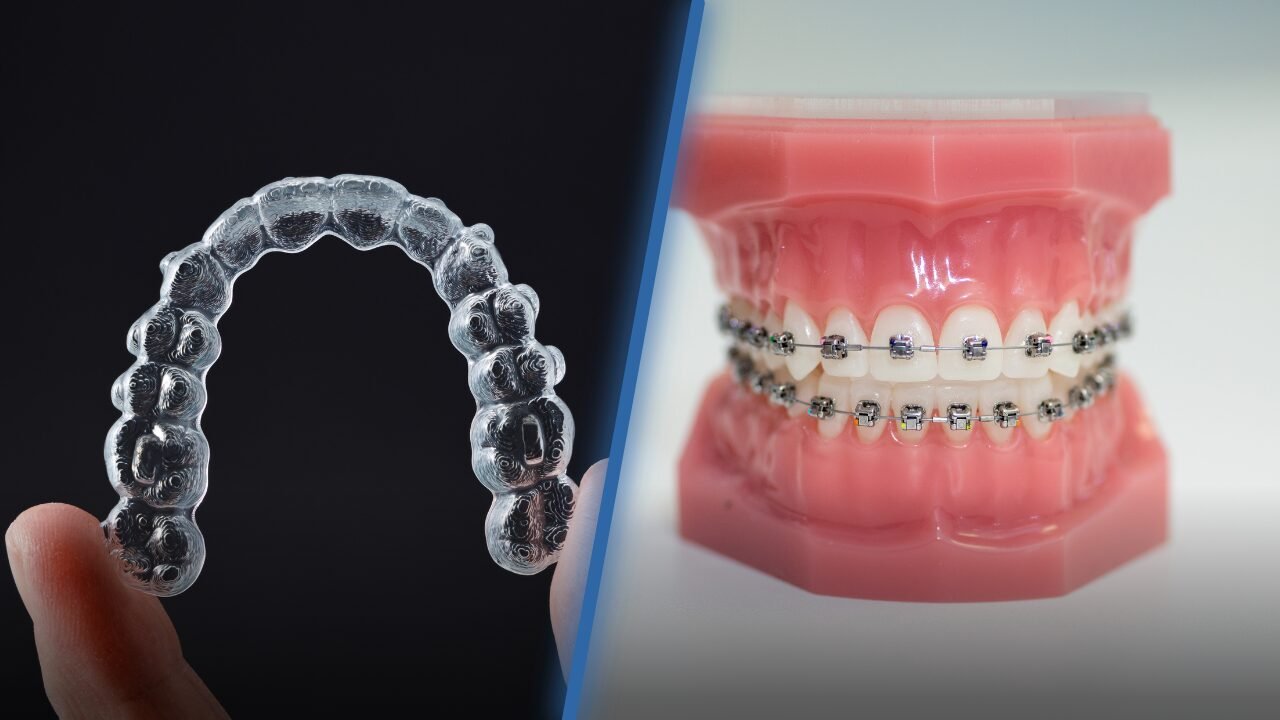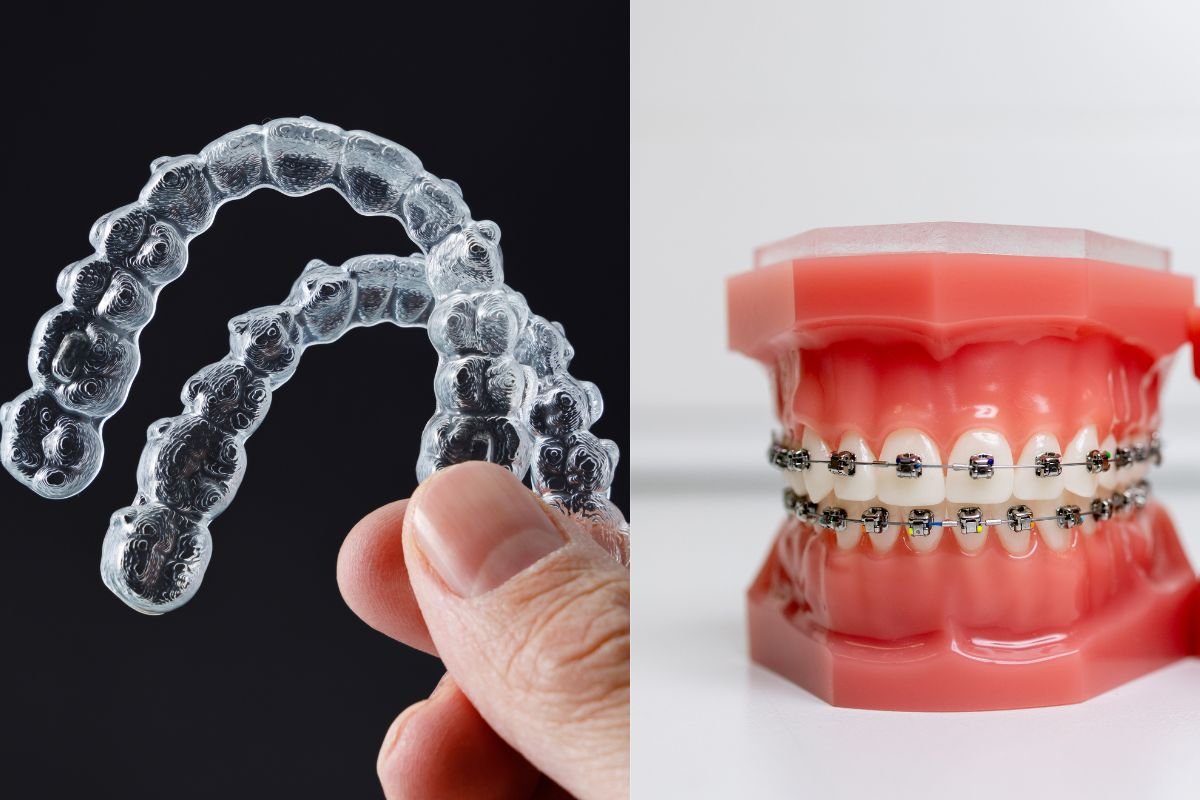Modern dentistry offers two main methods for teeth straightening: aligners and braces. Both options have their advantages and disadvantages, and the right choice depends on many factors.
What are braces and aligners?
Braces are a traditional method where small metal or ceramic brackets are attached to the teeth and connected with wires. They remain fixed in the mouth and apply controlled forces to move the teeth.
Aligners, on the other hand, are transparent trays made using 3D modeling technology. They are removable and replaced every two weeks.
Effectiveness
In the past, braces were considered more effective for complex cases. However, modern aligners can now treat 80 to 90 percent of the cases that previously required braces. Both methods can be used at any age.
Treatment duration
The treatment time is similar for both methods, usually between one and four years depending on the complexity of the case. Aligners offer predictable results since the final outcome is visualized in advance through 3D modeling.
Oral hygiene
Braces

- Permanently fixed to the teeth
- Require special care and cleaning tools
- Can cause plaque and bacteria buildup
Aligners

- Removed while eating and brushing
- Allow for regular oral care routines
- Make it easier to maintain hygiene
Aesthetic perspective
Types of braces
- Metal braces: most visible but highly effective
- Ceramic braces: less noticeable, closer to the natural tooth color
- Lingual braces: placed on the inner side of the teeth, invisible from the outside
Aligners
- Nearly invisible
- Do not affect speech
- Hardly noticeable visually

Who should choose which method?
Braces may be preferable if:
- You have very complex orthodontic problems
- Precise root positioning is required
- The patient is younger and needs constant monitoring
Aligners may be preferable if:
- Appearance and aesthetics are important
- You want to maintain your usual hygiene routine
- You have mild to moderate orthodontic problems
Cost difference
Aligners are generally more expensive than braces since they require advanced technology and a personalized approach. However, costs vary depending on case complexity and treatment duration.
The right choice should be made after consulting with an orthodontist. They will evaluate your specific case and recommend the most suitable method for you, considering medical, aesthetic, and financial factors. It is important to remember that both methods are effective if applied correctly and if the patient follows the doctor’s instructions.


